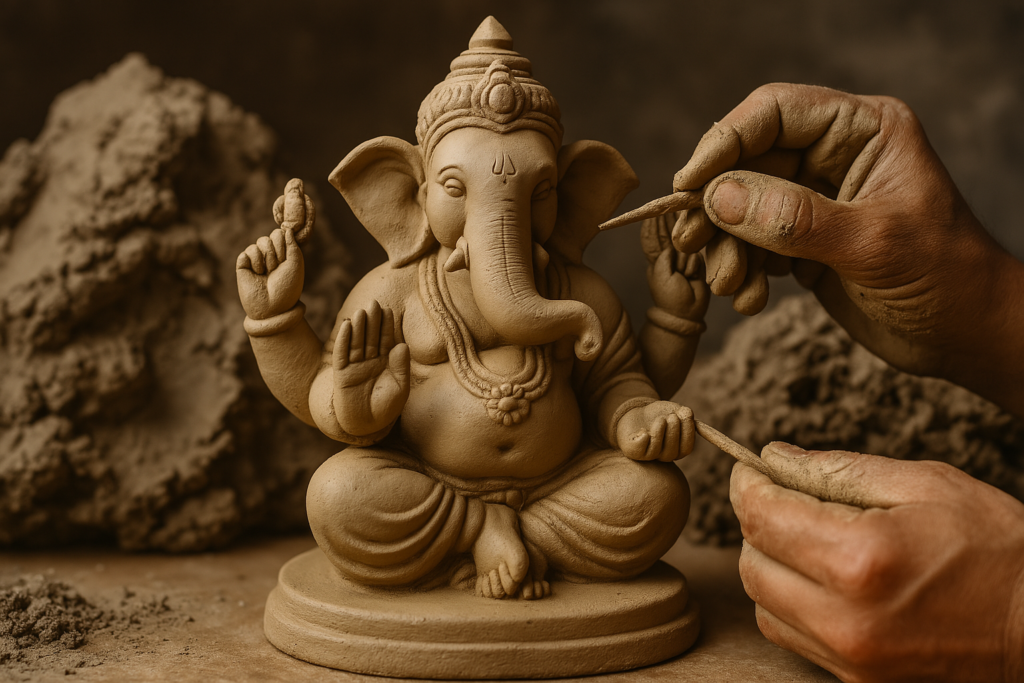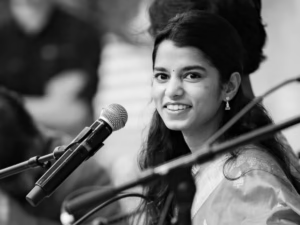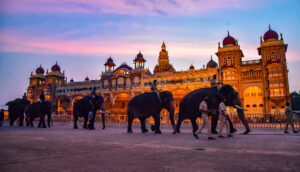As the monsoon clouds begin to drift away and September approaches with its golden skies, the streets of India transform into a vibrant canvas of devotion, music, and celebration. Among the many festivals that bring communities together during this season, the Gowri and Ganesha Festival—also known as Swarnagowri Vratha and Ganesh Chaturthi—stands out as one of the most cherished. Rooted in deep cultural traditions, yet evolving with contemporary expressions, this twin festival not only reinforces spiritual beliefs but also fosters social unity, environmental awareness, and economic vibrancy.
This year, the festival once again brought together millions of households, particularly in Karnataka, Maharashtra, Andhra Pradesh, and Tamil Nadu, where the worship of Goddess Gowri and Lord Ganesha is observed with unmatched fervor.
Origins of the Festival: Myths that Live Through Generations
The festival’s cultural roots trace back to stories from Hindu scriptures. According to mythology, Goddess Gowri (an incarnation of Parvati) descends to Earth a day before Ganesh Chaturthi, symbolizing purity, fertility, and marital bliss. Married women especially invoke her blessings for the well-being of their families, while young girls pray for a good life partner.
The following day celebrates her son, Lord Ganesha, the remover of obstacles, who is worshipped for wisdom, prosperity, and new beginnings. Stories from the Skanda Purana narrate how Ganesha was created by Parvati to guard her, and later became the beloved deity of millions after winning a cosmic race of intelligence against his brother, Kartikeya.
Thus, Gowri’s arrival sets the stage for Ganesha’s grand entry—a divine sequence that reflects the eternal bond between mother and child, while symbolizing strength followed by wisdom.
The Rituals: From Gowri Habba to Ganesh Chaturthi
Day 1: Gowri Habba
In Karnataka and parts of South India, the first day is Gowri Habba. Women install an idol of Goddess Gowri, often crafted in clay, silver, or decorated turmeric. She is adorned with flowers, bangles, and silk sarees, symbolizing feminine power. Special offerings like puliyogare (tamarind rice), kosambari (lentil salad), and sweet dishes such as payasam are prepared.
Married women invite neighbors and relatives for the “bagina” ritual, gifting turmeric, kumkum, bangles, betel leaves, coconut, and rice—items symbolizing prosperity. The air resonates with devotional songs, while laughter and stories fill households, turning the ritual into a social gathering as much as a spiritual act.
Day 2: Ganesh Chaturthi
The next morning marks the much-awaited Ganesh Chaturthi. Families bring home intricately designed idols of Ganesha, decorated with garlands and jewels. Some idols are modest, while others are towering artistic marvels, especially in public pandals.
The rituals begin with Prana Pratishtha—invoking the deity into the idol—followed by Shodashopachara Puja (16 forms of offerings). Among these, the most beloved is the offering of modakas, sweet dumplings believed to be Ganesha’s favorite.
Chants of “Ganapati Bappa Morya” echo through lanes, accompanied by drums, conches, and devotional songs. For many, installing Ganesha also marks the start of new ventures, marriages, and projects, as his blessings are considered indispensable.
Public Celebrations: The Pandal Culture
While home rituals are intimate, the festival’s grandeur shines most visibly in public celebrations and pandals. In cities like Mumbai, Pune, Bengaluru, and Hubballi, massive idols—sometimes 20 feet tall—are installed under elaborately themed marquees. Each pandal becomes a microcosm of creativity, with themes ranging from mythological tales to contemporary social issues like environmental conservation, women’s empowerment, and digital India.
The Lalbaugcha Raja in Mumbai remains one of the most iconic installations, attracting lakhs of devotees who stand in queues for hours to get a glimpse. Similarly, in Bengaluru’s Basavanagudi and Malleswaram, neighborhoods come alive with music, folk dances, rangolis, and food stalls.
These community celebrations are more than acts of worship—they act as binding forces, drawing together people of varied castes, classes, and even religions, to collectively participate in devotion and joy.
Economic Impact: A Festival That Moves Markets
The Gowri-Ganesha Festival is also an economic engine, generating employment and trade worth hundreds of crores.
- Idol-making industry: Months before the festival, artisans begin sculpting clay and Plaster of Paris idols. In Karnataka alone, lakhs of idols are sold, ranging from small table-top figures to life-sized models. Many artisans depend on these sales for their livelihood.
- Flower markets: With jasmine, marigold, and chrysanthemum in high demand, flower markets in Bengaluru, Mysuru, and Pune report record sales.
- Sweet shops: From traditional modakas in Maharashtra to kadabu in Karnataka, confectioners see booming business.
- Retail boom: Saree shops, jewelry stores, and household goods outlets witness surges in sales as families prepare offerings and gifts.
This economic cycle shows how the festival is as much about livelihoods as it is about faith.
Environmental Consciousness: A Growing Shift
In recent years, concerns have been raised about the environmental impact of the festival, particularly the immersion (visarjan) of idols made from non-biodegradable materials and chemical paints. Polluted rivers and lakes have triggered debates across states.
Responding to this, several eco-conscious initiatives have emerged:
- Clay idols: More families are shifting to natural clay idols that dissolve quickly in water.
- Seed Ganeshas: Innovative idols embedded with plant seeds encourage families to nurture a tree after immersion.
- Artificial tanks: Cities like Bengaluru and Pune have set up artificial immersion ponds to prevent water pollution.
- Community awareness: NGOs and schools organize drives promoting sustainable celebrations.
This shift is slowly becoming mainstream, proving that tradition and modern environmental responsibility can coexist.
Voices from the Ground: Families and Communities
Lakshmi Rao, a homemaker in Mysuru, recalls how Gowri Habba is her favorite part of the festival:
“For me, it is not only about worshipping the goddess but about meeting my neighbors, exchanging baginas, and feeling that sense of togetherness. It is the only day in the year when every woman in our street wears the brightest saree and shares food with each other.”
Meanwhile, Ganesh pandal organizers in Mumbai highlight the social role of the festival:
“Every year we pick a theme that creates awareness—last year it was plastic pollution, this year it is mental health. Lord Ganesha is our divine inspiration, but the message reaches society too,” says Rajesh Kulkarni, a committee member of a prominent pandal.
Children are also active participants. Eight-year-old Arjun from Hubballi shares:
“I like making small clay Ganeshas in school. My teacher says it helps the Earth. After visarjan, I plant a tree.”
These personal accounts reveal how the festival is not just a ritual but a cultural fabric interwoven with values of community, creativity, and care for the environment.
The Global Dimension
With the Indian diaspora spread worldwide, Gowri and Ganesha are no longer confined to Indian streets. Temples in the US, UK, Canada, and Australia host Ganesh Chaturthi with equal zeal. In places like New Jersey and London, idols are installed in community halls, and processions march with the same chants of Ganapati Bappa Morya.
These international celebrations highlight the adaptability of Indian traditions while also providing younger generations abroad with a cultural anchor.
The Festival as a Symbol of Resilience
In many ways, the Gowri and Ganesha Festival also embodies resilience. During the pandemic years, families scaled down celebrations, conducted virtual pujas, and adopted small idols at home. Yet the essence of devotion remained unbroken. This year’s celebrations saw a return to grandeur, but the lessons of sustainability and simplicity continue to shape the way many families approach the festival.
More Than Just a Festival
The Gowri and Ganesha Festival is not merely about rituals performed over two days—it is a celebration of family bonds, the victory of wisdom over ignorance, and the harmony between tradition and progress.
It is about mothers and children, as symbolized by Gowri and Ganesha. It is about removing obstacles, both spiritual and societal. It is about sharing prosperity with neighbors, artisans, and strangers alike.
As India grows more urbanized and fast-paced, festivals like this remind people to pause, gather, and celebrate what truly matters: community, faith, and the cycle of giving and renewal.
This year’s celebrations, whether in a small household in Bengaluru or a massive pandal in Mumbai, once again proved that the divine charm of Gowri and Ganesha continues to shine brightly, lighting the path for millions who believe in hope, wisdom, and togetherness.







More Stories
Maithili Thakur: From Folk Singing Sensation to Rising Political Star
Mysuru Dasara: The Royal Festival of Karnataka – History, Culture, and Celebration
Blood Moon Over Sydney: Unveiling the Celestial Show with Telephoto Magic